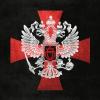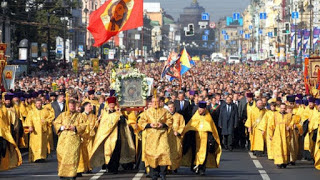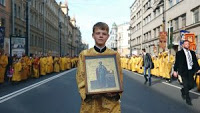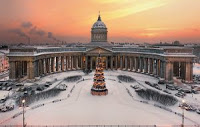

| Online: | |
| Visits: | |
| Stories: |

| Story Views | |
| Now: | |
| Last Hour: | |
| Last 24 Hours: | |
| Total: | |
TradCatKnight: Cross Procession in Saint Petersburg — October Revolution and the Return of Religion
Thursday, March 16, 2017 16:18
% of readers think this story is Fact. Add your two cents.
Cross Procession in Saint Petersburg — October Revolution and the Return of Religion
Cross Procession in Saint Petersburg — October Revolution and the Return of Religion
Although the Russian Orthodox are still heretics and schismatics we see some good underlying signs in Russia. as you know Our Lady said that it would be Russia which would be so pivotal in the return of Christendom eventually in the world. Keep praying for the consecration! It will be done late and in my opinion by Pope Benedict XVI’s successor (late).
(Moscow) Pictures of the cross procession in Saint Petersburg from September 12th. The procession led from the Kazan Cathedral over the famous Nevsky Prospect to the Alexander Nevsky Monastery.
Icon of Alexander Nevski
The Rurikid Alexander Newski, Prince of Novgorod (from 1249 Grand Prince of Kiev), brought the advance of the Swedes into Russian territory to a halt at the Battle of the Neva in 1240, and in 1242 in the Battle of Peipus also that of the Teutonic Order. He has been officially honored by the Russian Orthodox Church since 1547 as a saint. The Nevsky Prospekt, a 300-year-old grand boulevard of 4.5 kilometers, connects the Tsar’s winter palace to the Alexander Nevsky Monastery at the other end. In the monastery, the bones of the Saint Prince Rurikid are buried.
Along the boulevard you will also find the Kazan Cathedral, erected more than 200 years ago. It was built with St. Peter’s in Rome as a model. The cathedral was built over an older predecessor, the Church of the Virgin Mary. It is named after an icon of the Mother of Kazan who is venerated in the cathedral.
Kazan Cathedral
The church is considered a memorial church for the victorious defense against Napoleon’s campaign of 1812. In it, Field Marshal Michail Kutusov is buried, who as the Russian commander-in-chief, directed the defense. The Field Marshal had prayed before the fighting in the just finished church and asked the Mother of God for help.
After the Communist October Revolution, the cathedral was plundered and devastated. In 1918 the Archpriest of the Church, the philosopher Ornatsky, suffered martyrdom together with his two sons. Ornatsky had celebrated a requiem for the victims of the Communists. Shortly after, he and his two sons were then arrested. He was allowed to say a prayer for those condemned to death on a cliff above the Finnish Gulf, then he, his sons and 30 other men were shot and their bodies thrown over the cliffs into the sea.
If you enjoy the TradCatKnight blogs, please recommend above as a contributor!
Read more and watch related video at article link above.

The contributor has disabled comments for this story




